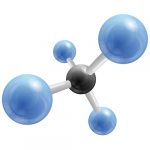10 Things to Know About the GHG Reporting Program
10 Things to Know About the GHG Reporting Program 1) The GHG Reporting Program covers only specific emissions. Only man-made (or anthropogenic) GHG emissions covered under the United Nations Framework Convention on Climate Change (UNFCCC) must be reported. These are: Carbon dioxide (CO2), Methane (CH4), Nitrous oxide (N2O), Hydrofluorocarbons (HFC), Perfluorocarbons (PFC), Sulfur hexafluoride (SF6), […]










